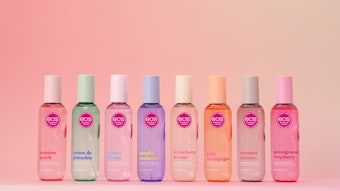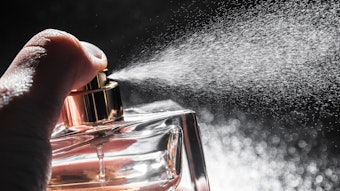The big regulatory story in 2008 continues to be REACH legislation in Europe. REACH (Registration, Evaluation, Authorization and Restriction of Chemical Substances) came into force July 1, 2007, and June 1, 2008, saw the start of pre-registration of substances.
The European Flavour and Fragrance Association (EFFA), a member of the International Fragrance Association (IFRA), has been busy helping to set up (pre-)consortia, approximately 20 thus far, to help the industry organize itself and (pre-)register substances on time.
The European Chemicals Agency (ECHA), the organization responsible for managing REACH, is now open for business in Helsinki, Finland. Unsurprisingly, there have been some issues in ramping up to serve an influx of registrations, with various software programs not being ready and some procedural glitches. However, pre-registration of substances is taking place as planned, and will continue until the deadline of Dec. 1, 2008.
The fragrance industry was one of the first sectors to respond to the demands of REACH and to get organized. This came naturally to an industry that has been regulating itself for more than 30 years through the IFRA Code of Practice, IFRA Standards and the more recently added compliance program.
Regularly Updated Standards
The IFRA Standards form the basis for the globally accepted and recognized risk management system for the safe use of fragrance ingredients and are part of the IFRA Code of Practice. IFRA announced the 43rd Amendment to the IFRA Code of Practice in July of this year. This amendment relates to a total of 60 standards, eight of which are new standards based on IFRA’s new Quantitative Risk Assessment (QRA); 26 remain unchanged—though the format in which they are presented has changed—and another 26 are related to materials with pre-existing standards that required updating.
The QRA approach, introduced in 2005, is designed to restrict fragrance materials that have a potential to induce skin sensitization. This method identifies exposure limits for various consumer product types. Product types are then grouped into 11 product categories, according to similar safety assessment factors and exposure levels. This new approach is a much more refined procedure for evaluating sensitizing materials, and, therefore, provides more precise guidance on use levels of materials depending on the situation and the product in which they are used Amendments to the code, if required, are issued annually, based on new scientific developments. These contain either new usage restrictions or revisions of existing usage restrictions.
100% Compliance With the Code
In 2006, IFRA introduced a compliance program to ensure that the IFRA Standards in the Code of Practice were being followed. In 2008, 50 fragranced products were selected at random from a selection of 462 marketed products from 10 different countries in which IFRA has a member association or an affiliate and were analyzed for IFRA banned ingredients. The analysis was part of the second cycle of the IFRA Compliance Program, begun in May 2007 and completed in April 2008. This second cycle of testing has again shown no IFRA banned substances in any of the products (present above a level of 0.01%, which is a “no-concern level” and generally considered the limit of accurate quantification).
The products—which include fine fragrances, body care products and household products—were analyzed by an independent body, Institute Battelle of Switzerland.
Sound, Independent Science Adds to Consumer Reassurance
The science behind the IFRA Standards comes from the Research Institute for Fragrance Materials (RIFM), which was formed in 1966 to analyze, evaluate and distribute scientific data, cooperate with official agencies, and encourage safety standards for the use of fragrance ingredients.
The RIFM’s mission is to:
- Engage in research and evaluation of fragrance materials through an independent expert panel
- Determine safety in use
- Gather, analyze and publish scientific information
- Distribute scientific data and safety assessment judgments to RIFM members, industry associations and other interested parties
- Maintain an active dialogue with official international agencies
The RIFM is funded by the fragrance industry and its customers. However, the scientific decisions are made by REXPAN, which is an independent panel of experts with no links to the fragrance industry whatsoever.
REXPAN (RIFM Expert Panel) is comprised of independent experts from fields such as dermatology, toxicology, pathology and environmental sciences. Its role is to evaluate the data on a fragrance ingredient to see if it supports the current use level, to make sure that there is no risk for the consumer. In cases where the safety assessment does not support the current use, REXPAN instructs IFRA to issue a standard either restricting or banning a material.
Stricter, Faster Than Government Regulation
Because of the fragrance industry’s highly developed code of practice, standards, compliance program and independent scientific evaluation, industry members can react far more quickly to any new findings than national, regional or global regulators. If a substance is found to cause an unacceptable risk to a consumer or the environment, the industry can immediately begin to withdraw or restrict the substance. This system provides peace of mind not only for consumers, who can enjoy fragrances safely, but also for personal care product manufacturers who require the highest standards of risk assessment for their products.
IFRA Standards are also stricter than many regulations, and are recognized by many as the highest level of regulation. The European Cosmetics Directive has introduced a number of IFRA Standards in its annexes. Brazilian policy makers have actually adopted the IFRA Standards into law, and the new South East Asia-Pacific (ASEAN) cosmetic directive—which took effect on Jan. 1, 2008—explicitly refers to the IFRA Standards where fragrances in cosmetic products are concerned. In addition, IFRA aims to have its standards officially recognized internationally—either through customer trade associations or by legislation—to help ensure a harmonized, consistent and effective level of safety for fragrance materials.
Matthias Vey is the scientific director of IFRA, located in Brussels, Belgium, responsible for the management of the fragrance industry’s worldwide self-regulatory program—including the IFRA Code of Practice and Standards for the safe use of fragrance ingredients. He manages all of IFRA’s science and regulatory related committees as well as the association’s compliance program, and is involved in IFRA’s crisis management system. A chemist by training, he trained as a perfumer and then started in fragrance research and development of Marbert Cosmetics in Düesseldorf, Germany, before becoming the global regulatory affairs manager of Coty/Lancaster.










